Will the brackets hold such a heavyweight: how much does a section of an old-style cast iron radiator weigh?
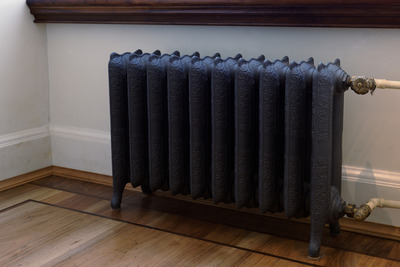
Radiators they come together like a construction set - they are made up of a certain number of sections of the same size.
The sections are cast at the factory. For production grey cast iron is used.
Channels, intended for transporting water, have elliptical or round shape.
Content
Characteristics of cast iron heating radiators
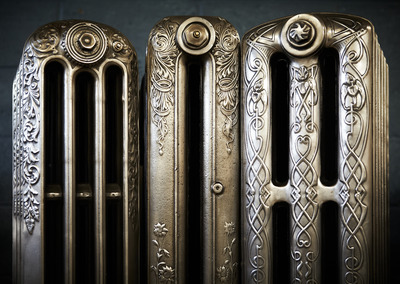
During the assembly process of the product sections are connected by valves, A the joints are carefully sealed to avoid leakage. A distinction is made between single and dual channel sections.
Depending on how many sections the products consist of, they have different widths and heights. Before choosing the width of the radiator, analyze the area of the room requiring heating, the number of windows and the thickness of the walls.
So, if you need enhanced heating of the room, choose a battery with a large number of sections. Height batteries has a range from thirty-five centimeters to one and a half meters.
Important! It follows pay attention to the depth products - this indicator determines how well heating devices can match the interior of the room.
Depth radiator happens from fifty to one hundred and forty centimeters. To mount a cast iron radiator, you need strong brackets that need to be securely and carefully fixed to the wall. The batteries are hung under the window, placed in such a way that they retreat from the wall at a small distance. However, there are models of batteries that are equipped with legs.
How much does a section of an old-style battery weigh, and how much does a modern one weigh?
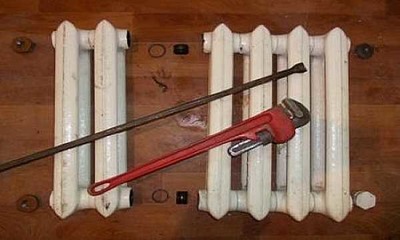
This battery is a thing too clumsy - not everyone will be able to transport it alone, since only one section weighs 5-6 kilogramsTherefore, it is recommended to hire specialists for installation or dismantling.
Such a huge weight of the product is created thick walls — but they allow you to keep the heat for a long period of time and ensure that the heating device will last at least fifty years.
As for non-standard cast iron heating devices - the weight of one rib in them is from 3.7 to 14.5 kilograms.
Weight of one rib of the device from different manufacturers
GOST does not regulate in any way the weight of one section of the device, therefore products from different manufacturers differ slightly in weight.
- Nizhny Tagil
Manufacturers of cast iron radiators in Nizhny Tagil offer us four-section radiators weight 18.3 kg; seven-section - 31.5 kg.
- Belarus
The Belarusian plant produces nine species cast iron products in which the weight of one rib varies from 3.7 to 6.7 kg.
- Santekhlit
The manufacturer offers five models cast iron radiators with a minimum weight of one section 4.45 kg, with a maximum of 7.1 kg.
Surface treatment: sanding
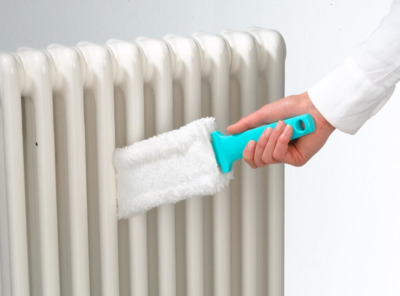
Such heating devices require frequent painting, as scratches or chips remain on them.
Changing the color of a heating appliance may require repairs to the entire room. The update process Radiator colors are divided into several stages.
First The stage includes surface preparation. To begin with wash thoroughly battery, remembering to remove any traces of dirt between the sections.
After remove a layer of old paint - there are many for this special solutions, which do not harm the metal. The solution is applied to the heating device with a dry brush and the radiator is wrapped with film. Already After an hour, the paint is removed with a spatula. Afterwards, carefully sand the surface of the battery with fine-grained sandpaper and degrease it with a solvent. If there are areas on the battery that are touched by rust, they are processed to the metal.
Primer
Applying a primer will complete the process of preparing the product - after that, painting begins. The paint will lie on the surface in a beautiful, even layer. And also the primer will help fight corrosion.
Coloring
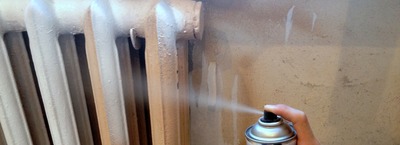
Paint for radiators should meet many requirements:
- be abrasion resistant and non-toxic;
- withstand temperatures over one hundred degrees, for example, containing metal powder, is considered the most heat-resistant;
- should suitable for painting metal surfaces;
- suitable for priming;
- contribute to the protection products from corrosion processes;
- serve for a long time, preserving the color.
Radiators will be given a glossy shine and durable color acrylic enamels, which contain organic solvents. However, they have a serious drawback - a sharp unpleasant smell during the painting process.
Alkyd enamels They lay flat and are resistant to abrasion. However, they emit a strong odor not only during application, but also for a certain period of time after complete drying when the radiator is heated.

Photo 1. Can of heat-resistant alkyd enamel for heating radiators, 0.5 l, manufacturer Dali.
To prevent paint drips from ruining the already painted surface, It is recommended to start painting from the top batteries.
Important. It is important to remember that you can't paint hot things batteries.
Applying the second layer
When the first coat of paint is dry (drying time depends on the quality of the paint, but on average it is twenty hours), another layer is applied. This allows you to hide the unevenness on the radiator surface, increases the resistance of the painted surface to external influences and improves the aesthetic appearance of the radiator.
Attention! You cannot turn on the batteries until the paint is completely dry. There is no need to artificially speed up the drying process. - this can lead to negative consequences.
Useful video
Check out the video review of the cast iron heating battery MS 140: its advantages and disadvantages.
Selecting the weight and volume of cast iron batteries
When choosing a radiator model, it is worth considering the fact that Heat output depends on size heating device. The weight, volume and other parameters of the section are slightly vary depending on the manufacturer, but in general they have approximately the same characteristics.







Comments